Psychology of Indian drivers: Embracing Chaos And Competition
India is a land of contrasts, and this extends to the roads as well. Driving in India is an experience like no other, a kaleidoscope of chaos and order, competition and cooperation. To navigate Indian traffic, drivers must possess a unique psychological makeup – a blend of resilience, adaptability, and a high tolerance for uncertainty. And if you are used to disciplined ‘Western’ driving, courage like that of a Roman soldier on the frontlines!
At the heart of the Indian driving experience lies a remarkable ability to embrace chaos. The roads in India are often unpredictable, with a diverse array of vehicles jostling for space – from cars, trucks and buses, SUVs and MPVs, motorcycles, various scooters, auto-rickshaws, and even the occasional bullock cart. And that is not even considering the pedestrians who trust the Almighty and the judgment of the drivers to dash across with impunity.
Amidst this seeming pandemonium, Indian drivers exhibit a relatively remarkable poise, navigating through tight spaces and unexpected obstacles with a calmness born of necessity. The few who lose it are actually the exception than the norm.
Embrace chaos to survive
Take, for instance, the bustling streets of Delhi. It’s not uncommon to witness a family of four skillfully maneuvering a single motorcycle through a sea of vehicles, unfazed by the surrounding commotion and metal monsters. This high tolerance for chaos is a survival mechanism, a psychological trait that allows Indian drivers to remain composed in the face of ever-changing road conditions.
However, this tolerance can sometimes boomerang, leading to overconfidence and underestimation of risks. Drivers accustomed to navigating through chaotic traffic might become too casual about dangerous situations, such as overtaking from the wrong side or weaving through tight spaces at high speeds. This false sense of security can have serious consequences, increasing the risk of accidents and collisions. And often, the confidence comes from a lack of knowledge about the risks.
Competitive spirit rules, co-operative spirit not so much

Another defining characteristic of the Indian driving experience is the competitive spirit that permeates the roads. With space at a premium and the sheer volume of traffic, drivers often adopt aggressive tactics to assert their position. Honking, tailgating, and minimal adherence to lane discipline are common sights, as drivers vie for space and speed.
On the highways connecting major cities, it’s not unusual to witness a car aggressively flashing its lights and honking insistently at another vehicle, urging them to move aside. This competitive driving culture is a double-edged sword – it reflects the practical need to navigate through congestion, but it can also escalate into road rage incidents and dangerous confrontations.
Non-Verbal Communication
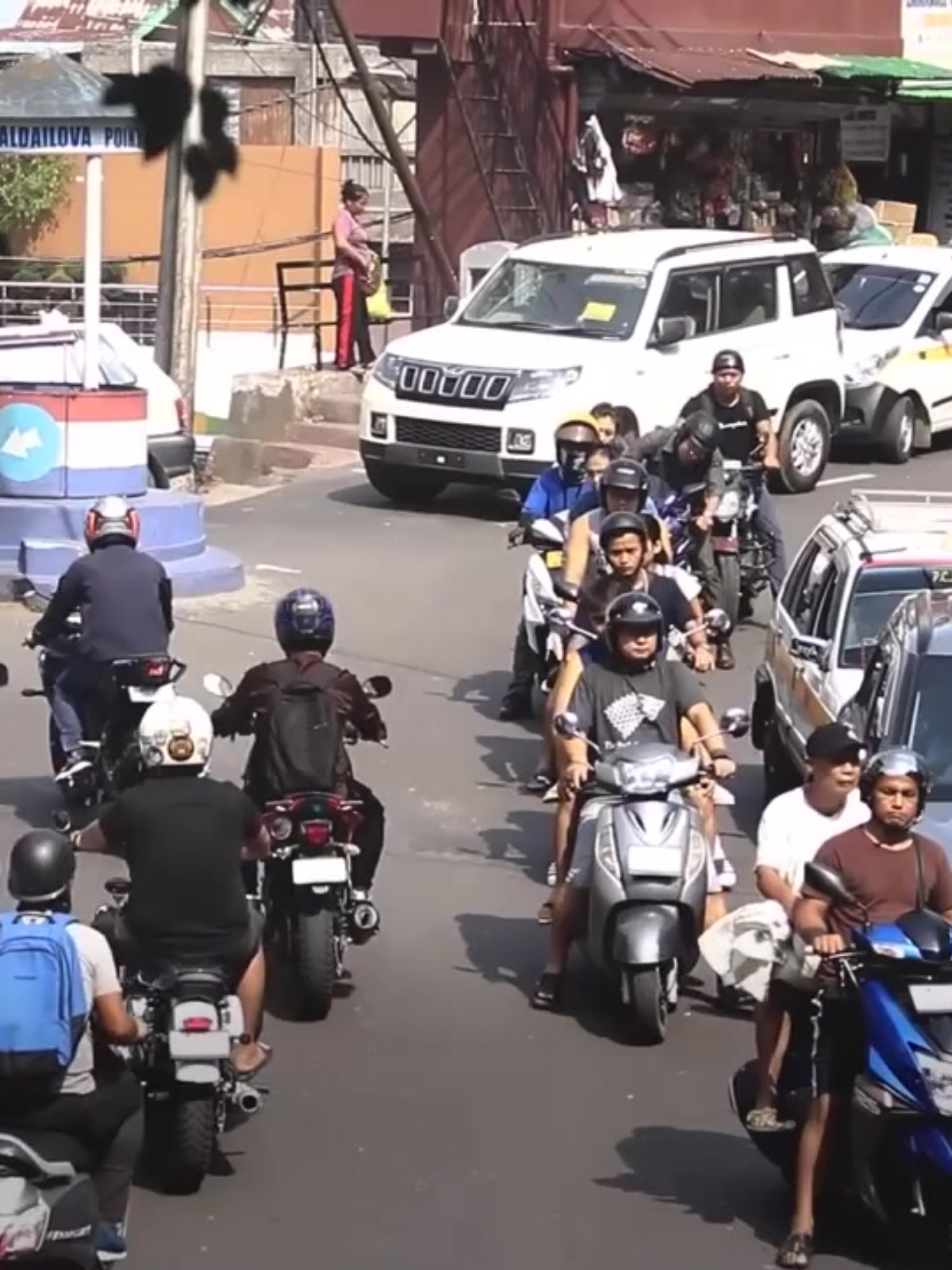
Amidst the seeming chaos, however, lies a unique form of communal understanding and non-verbal communication. Indian drivers have developed an intricate system of gestures, eye contact, and strategic honking to negotiate their way through traffic. At a busy intersection without traffic signals, for example, drivers and riders use a combination of these cues to navigate the intersection smoothly, relying on mutual understanding and quick decision-making. Indian drivers, somehow, have the ability to find order in disorder.
When does it go wrong? The risk of misinterpretation is real. The unwritten rules of one state and its communication styles do not always translate elsewhere. While traveling through another state or city, or maneuvering around tourists’ or visitors’ vehicles, chances of misinterpretation are high. And then there are the rebels who break conventions and surprise drivers, often resulting in scrapes or bigger accidents.
Respect for authority but distrust in the system
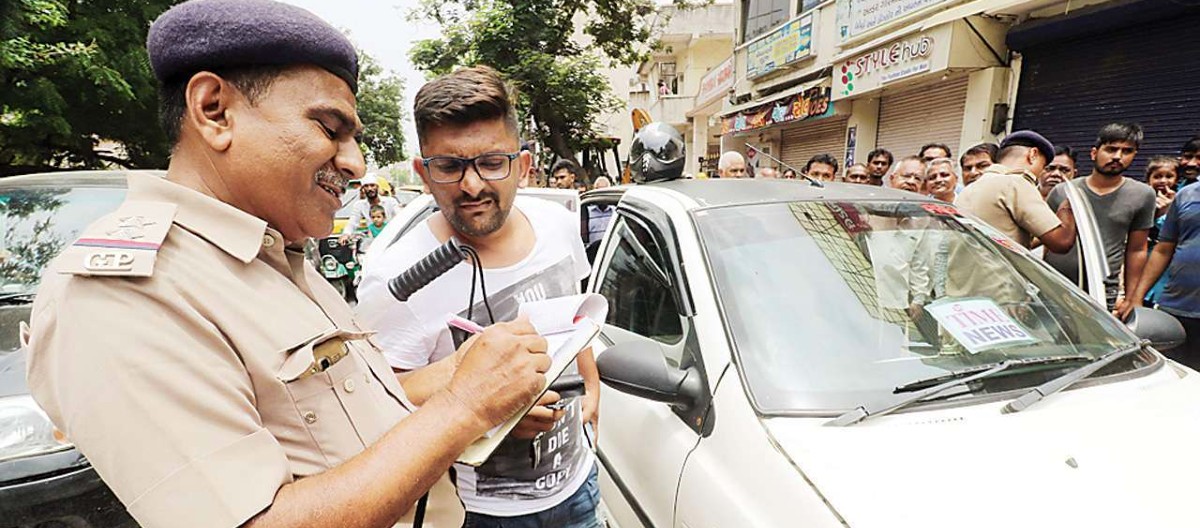
The relationship between Indian drivers and authority figures, such as traffic police, is another intriguing aspect of the driving psychology. While there is a general respect for authority, there is also a pervasive distrust in the traffic management systems and regulations, often seen as being inconsistently applied.
This distrust can lead to a peculiar behavior where drivers might obey rules only when enforcement is visible or when they perceive a direct benefit to compliance. For instance, observing a temporary traffic checkpoint in Bangalore, drivers might suddenly become more disciplined, wearing seatbelts and ensuring their helmets are on. However, the same drivers might bypass basic safety rules or traffic laws when on less monitored roads, reflecting a respect for authority that is contingent on the likelihood of being caught.
This tendency to follow rules only in the presence of authority figures can foster a culture of habitual rule-breaking, increasing the risk of accidents and legal penalties.
Socio-economic status projection
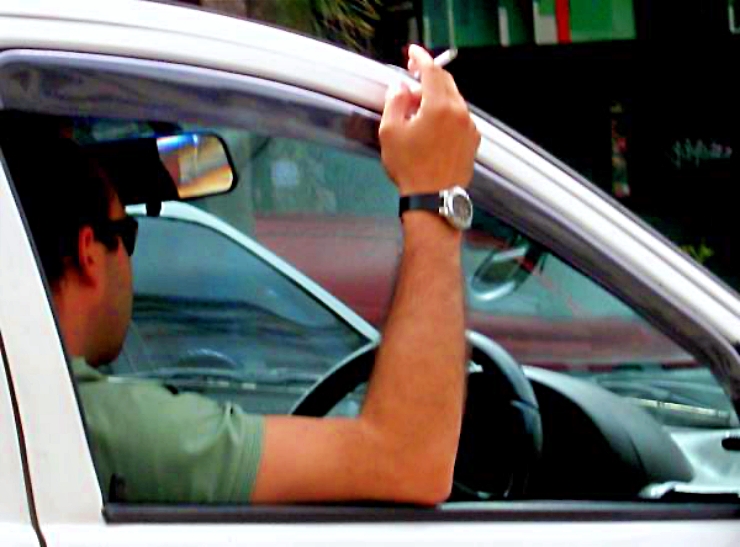
The socio-economic status of drivers can also influence their driving behaviors. Those with higher socio-economic status might exhibit a sense of entitlement or superiority on the road, leveraging their status to intimidate other road users or negotiate their way out of fines. In contrast, individuals from lower socio-economic backgrounds might adopt more cautious or defensive driving behaviors, keenly aware of the economic implications of potential accidents or fines.
In the posh areas of Mumbai, for instance, luxury cars often flagrantly break traffic rules, relying on their social standing to avoid consequences. Conversely, in less affluent neighborhoods, cyclists and pedestrians exhibit heightened caution, mindful of the high stakes associated with road accidents for their personal and financial well-being. Note that this is a very broad generalisation – rule breaking is visible everywhere, but the less privileged take slightly fewer risks on the road.
Adaptation and resilience
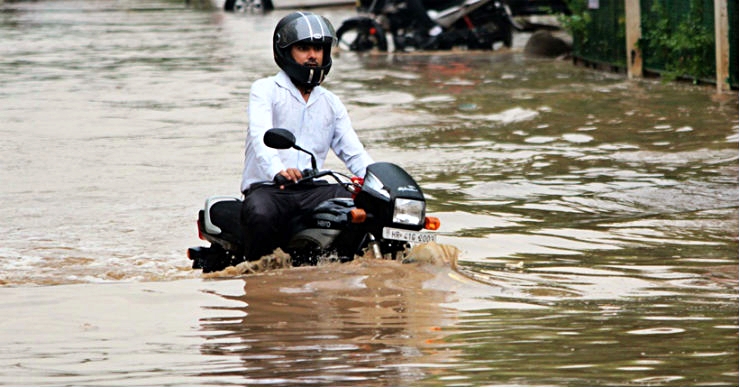
While navigating the unique challenges of Indian roads, drivers must also contend with environmental factors such as monsoon rains, flooding, and other natural hazards. In such situations, the resilience and adaptability of Indian drivers truly shine. After a sudden downpour in Kolkata or Mumbai, for example, streets quickly become waterlogged, and traffic comes to a halt. Yet, drivers and riders find innovative ways to navigate the flooded streets, demonstrating a collective resilience and ingenuity in the face of adversity. Even traffic jams that take ages to untangle, you will find that the majority of drivers have an acceptance of the impossible situation, and few are agitated or raging about it.
However, this resilience can sometimes lead to complacency, with drivers overestimating their ability to handle hazardous conditions. Attempting to drive through severely flooded streets, for instance, can result in vehicle damage, accidents, or becoming stranded, especially if the driver underestimates the risks involved.
While some aspects of this driving psychology are laudable, such as the ability to adapt and the communal understanding, others, like aggressive behavior and rule-breaking, pose significant risks. Ultimately, it is this delicate balance between the positive and negative traits that defines the Indian driving experience, a captivating blend of chaos and order that continues to fascinate and challenge drivers from across the globe.
The post Psychology of Indian drivers: Embracing Chaos And Competition first appeared on Cartoq.
India is a land of contrasts, and this extends to the roads as well. Driving in India is an experience like no other, a kaleidoscope of chaos and order, competition and cooperation. To navigate Indian traffic, drivers must possess a unique psychological makeup – a blend of resilience, adaptability, and a high tolerance for uncertainty. And if you are used to disciplined ‘Western’ driving, courage like that of a Roman soldier on the frontlines!
At the heart of the Indian driving experience lies a remarkable ability to embrace chaos. The roads in India are often unpredictable, with a diverse array of vehicles jostling for space – from cars, trucks and buses, SUVs and MPVs, motorcycles, various scooters, auto-rickshaws, and even the occasional bullock cart. And that is not even considering the pedestrians who trust the Almighty and the judgment of the drivers to dash across with impunity.
Amidst this seeming pandemonium, Indian drivers exhibit a relatively remarkable poise, navigating through tight spaces and unexpected obstacles with a calmness born of necessity. The few who lose it are actually the exception than the norm.
Embrace chaos to survive
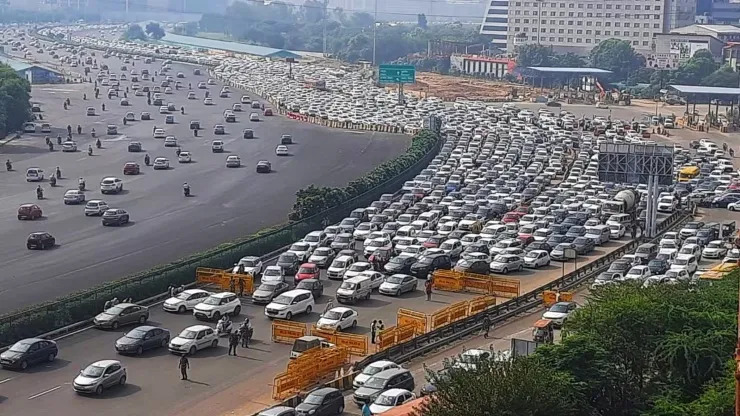
Take, for instance, the bustling streets of Delhi. It’s not uncommon to witness a family of four skillfully maneuvering a single motorcycle through a sea of vehicles, unfazed by the surrounding commotion and metal monsters. This high tolerance for chaos is a survival mechanism, a psychological trait that allows Indian drivers to remain composed in the face of ever-changing road conditions.
However, this tolerance can sometimes boomerang, leading to overconfidence and underestimation of risks. Drivers accustomed to navigating through chaotic traffic might become too casual about dangerous situations, such as overtaking from the wrong side or weaving through tight spaces at high speeds. This false sense of security can have serious consequences, increasing the risk of accidents and collisions. And often, the confidence comes from a lack of knowledge about the risks.
Competitive spirit rules, co-operative spirit not so much

Another defining characteristic of the Indian driving experience is the competitive spirit that permeates the roads. With space at a premium and the sheer volume of traffic, drivers often adopt aggressive tactics to assert their position. Honking, tailgating, and minimal adherence to lane discipline are common sights, as drivers vie for space and speed.
On the highways connecting major cities, it’s not unusual to witness a car aggressively flashing its lights and honking insistently at another vehicle, urging them to move aside. This competitive driving culture is a double-edged sword – it reflects the practical need to navigate through congestion, but it can also escalate into road rage incidents and dangerous confrontations.
Non-Verbal Communication

Amidst the seeming chaos, however, lies a unique form of communal understanding and non-verbal communication. Indian drivers have developed an intricate system of gestures, eye contact, and strategic honking to negotiate their way through traffic. At a busy intersection without traffic signals, for example, drivers and riders use a combination of these cues to navigate the intersection smoothly, relying on mutual understanding and quick decision-making. Indian drivers, somehow, have the ability to find order in disorder.
When does it go wrong? The risk of misinterpretation is real. The unwritten rules of one state and its communication styles do not always translate elsewhere. While traveling through another state or city, or maneuvering around tourists’ or visitors’ vehicles, chances of misinterpretation are high. And then there are the rebels who break conventions and surprise drivers, often resulting in scrapes or bigger accidents.
Respect for authority but distrust in the system

The relationship between Indian drivers and authority figures, such as traffic police, is another intriguing aspect of the driving psychology. While there is a general respect for authority, there is also a pervasive distrust in the traffic management systems and regulations, often seen as being inconsistently applied.
This distrust can lead to a peculiar behavior where drivers might obey rules only when enforcement is visible or when they perceive a direct benefit to compliance. For instance, observing a temporary traffic checkpoint in Bangalore, drivers might suddenly become more disciplined, wearing seatbelts and ensuring their helmets are on. However, the same drivers might bypass basic safety rules or traffic laws when on less monitored roads, reflecting a respect for authority that is contingent on the likelihood of being caught.
This tendency to follow rules only in the presence of authority figures can foster a culture of habitual rule-breaking, increasing the risk of accidents and legal penalties.
Socio-economic status projection

The socio-economic status of drivers can also influence their driving behaviors. Those with higher socio-economic status might exhibit a sense of entitlement or superiority on the road, leveraging their status to intimidate other road users or negotiate their way out of fines. In contrast, individuals from lower socio-economic backgrounds might adopt more cautious or defensive driving behaviors, keenly aware of the economic implications of potential accidents or fines.
In the posh areas of Mumbai, for instance, luxury cars often flagrantly break traffic rules, relying on their social standing to avoid consequences. Conversely, in less affluent neighborhoods, cyclists and pedestrians exhibit heightened caution, mindful of the high stakes associated with road accidents for their personal and financial well-being. Note that this is a very broad generalisation – rule breaking is visible everywhere, but the less privileged take slightly fewer risks on the road.
Adaptation and resilience

While navigating the unique challenges of Indian roads, drivers must also contend with environmental factors such as monsoon rains, flooding, and other natural hazards. In such situations, the resilience and adaptability of Indian drivers truly shine. After a sudden downpour in Kolkata or Mumbai, for example, streets quickly become waterlogged, and traffic comes to a halt. Yet, drivers and riders find innovative ways to navigate the flooded streets, demonstrating a collective resilience and ingenuity in the face of adversity. Even traffic jams that take ages to untangle, you will find that the majority of drivers have an acceptance of the impossible situation, and few are agitated or raging about it.
However, this resilience can sometimes lead to complacency, with drivers overestimating their ability to handle hazardous conditions. Attempting to drive through severely flooded streets, for instance, can result in vehicle damage, accidents, or becoming stranded, especially if the driver underestimates the risks involved.
While some aspects of this driving psychology are laudable, such as the ability to adapt and the communal understanding, others, like aggressive behavior and rule-breaking, pose significant risks. Ultimately, it is this delicate balance between the positive and negative traits that defines the Indian driving experience, a captivating blend of chaos and order that continues to fascinate and challenge drivers from across the globe.
The post Psychology of Indian drivers: Embracing Chaos And Competition first appeared on Cartoq.
